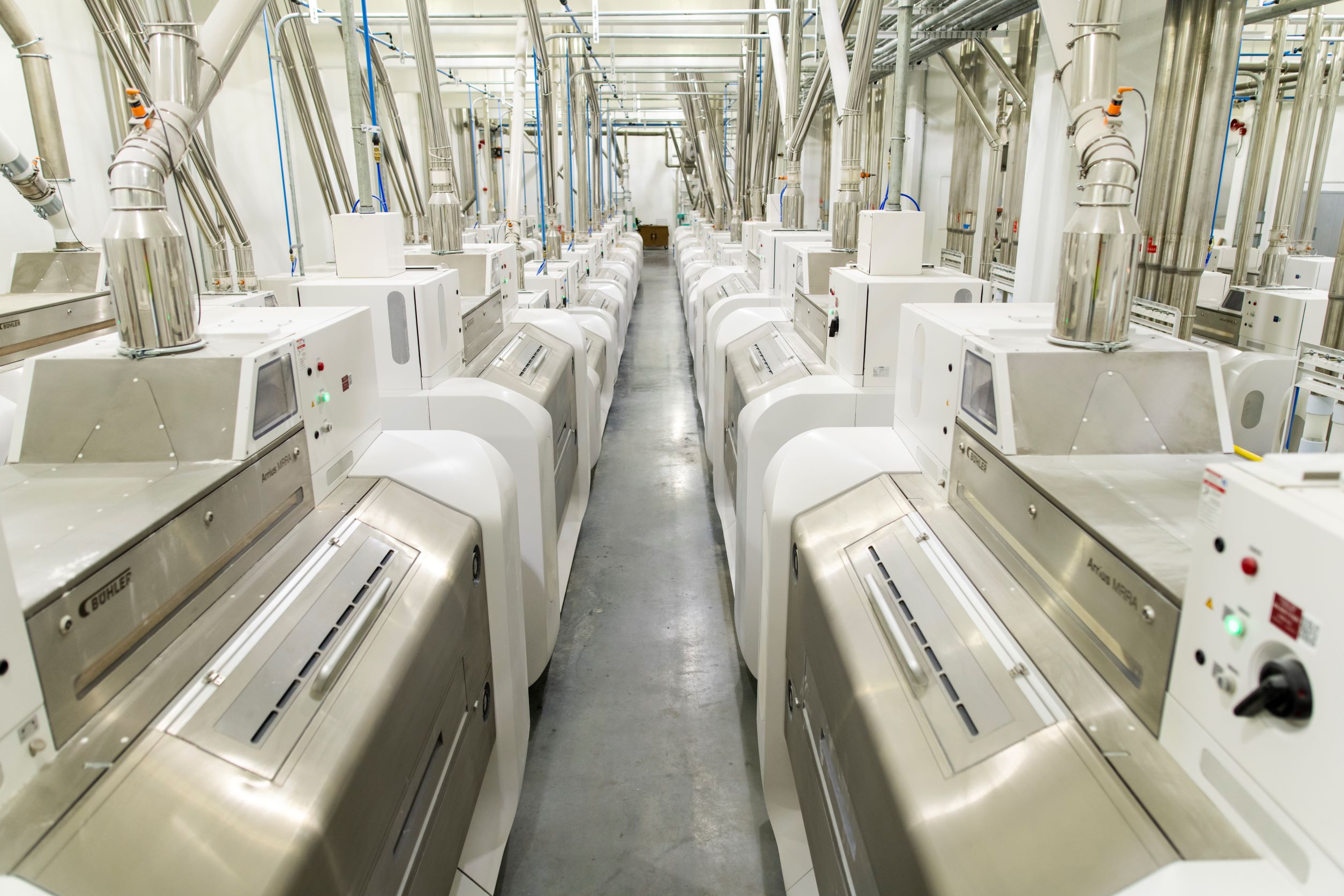Ardent Mills has opened its new flour mill near Tampa to replace an aging facility nearby and to provide a working model of the cutting edge of automated processing at a time when harnessing the benefits of labor-saving milling technology is more important than ever.
Denver-based Ardent operates about 45 mills and specialty plants across North America and employs about 2,500 people. But the 34 who are staffing the company’s brand new Port Redwing Mill in Gibsonton, Florida, are optimizing human labor as never before in an Ardent Mill plant that has turned to AI, IoT and other data-powered technology to boost productivity, increase efficiency, ensure product consistency, bolster safety and strengthen supply-chain agility.
As a result, Port Redwing employs about 15 fewer people than the old mill in Tampa and is increasing output by 25%.

“When we kicked off the project to build the new mill, we felt like we had a real good opportunity to use this as a canvas in a way that we could automate not just this mill, from the ground up, but also try new automation capabilities that we could use in every mill,” Chris Meyerpeter, Ardent Mills’ CIO, told StrategicCIO360.com. “We looked at every element. We’re in the right place to automate now and in the future with other tech advances.”
Ardent Mills CEO Dan Dye called the Port Redwing Mill “a big deal and a big investment, but it’s important in the environment we’re in.”
The thrust of the investment was “trying to take out the manual steps in the handoff of processing the product itself,” Meyerpeter explained. “It goes through lots of machines. So how could we automate as much of the flour production process as possible so that we could do it with a smaller workforce size. Not because we’re trying to reduce it but because we’re seeing real trouble in trying to bring enough people in to run the mills in the older, traditional way. We needed to look at automation of that. We didn’t have many other options.”
So Ardent Mills utilized new sensor systems and IoT networks “to make sure we have our equipment connected and have information at our fingertips so we can constantly monitor and get alerts and be more focused on what we have to look at on the plant floor,” Meyerpeter said. “That way we can go to one that might have a blockage or need some assistance.”
Previously, workers had to monitor much of the grinding, sifting and separating of flour components and keep it flowing as well as checking on quality and continually running samples to the mill lab to ensure customer specs were being met.
“We’re only in month three of delivering products to customers,” Meyerpeter said. “But key data points already are beginning to show no doubt that we can run more efficiently and get a little more focused in maintenance and production and packaging.”
Port Redwing workers, he said, have been “receptive” to being upskilled in technology so they can run the new equipment. “We also are making it as user-friendly as possible,” Meyerpeter said. “The more that it is, the less tech-savvy people have to be to operate it. We put a lot of focus on the usability and design of handoffs, using a Microsoft platform to have an automatic handoff instead of a manual one.”









